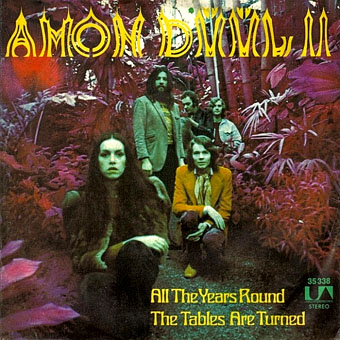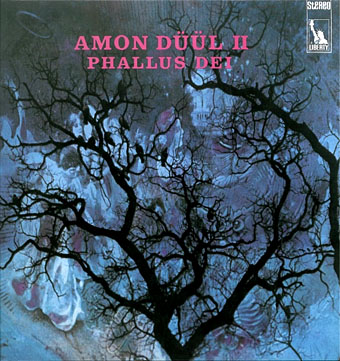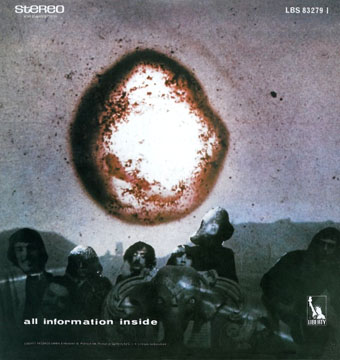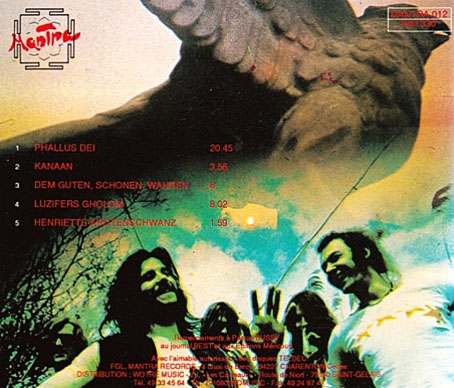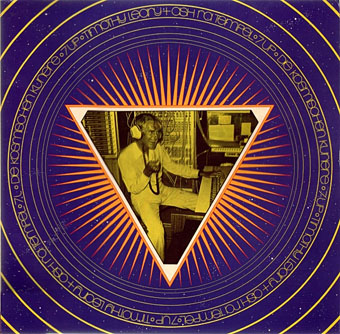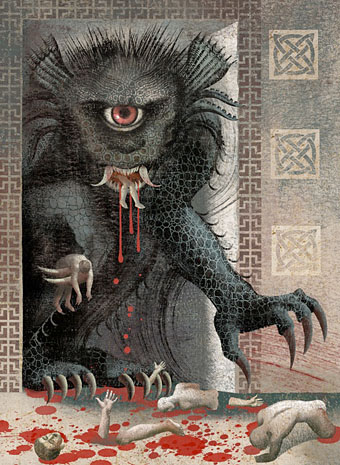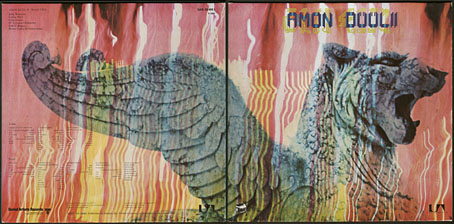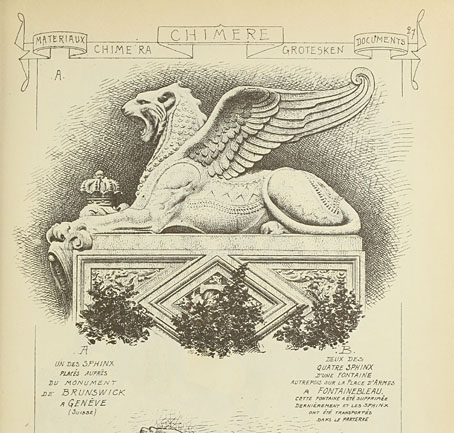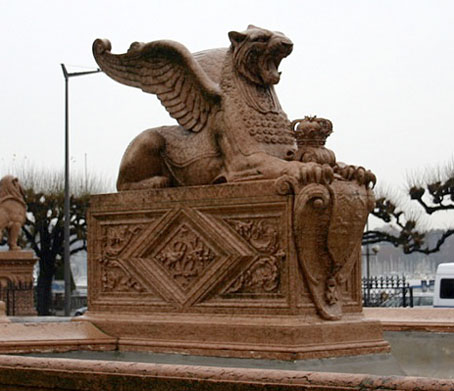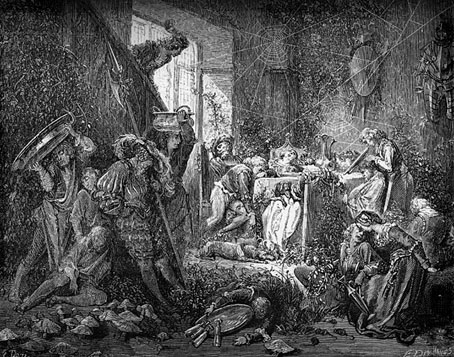
La Belle au bois dormant (The Sleeping Beauty in the Wood).
More illustrated Perrault. Gustave Doré’s intention to produce definitive illustrations for his editions certainly paid off when he turned his attention to the French fairy tales. Doré’s work may lack the light touch required for some of these stories but a couple of the engravings—Red Riding Hood in bed with the wolf, Puss-in-Boots—are reproduced endlessly whenever picture editors need a suitable illustration. Doré’s characters can be rather wooden at times but the expressions on the face of the wolf and the girl are perfect.
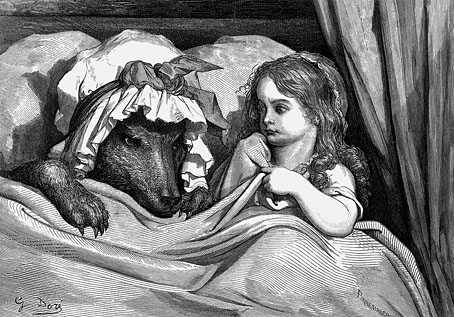
Le Petit Chaperon rouge (Little Red Riding Hood).
Elsewhere Doré contributes some original details: the court in Sleeping Beauty is usually shown besieged by thorns or bracken but Doré has giant fungi growing all over the floor; in Little Tom Thumb the children are described as knocking on the door of the ogre’s house then being let inside but Doré shows the ogre’s wife greeting them with a shaft of lamplight. These illustrations were published in several editions throughout the 1860s which makes that lamplight beam a very advanced pictorial effect. Incidentally, for those who read the Amon Düül II cover art post a couple of days ago, the figure of Tom Thumb stealing the ogre’s seven-league boots may be glimpsed outside the spacecraft window in the centrespread of Dance of the Lemmings.
Wikimedia Commons has more of the Doré illustrations; there’s also a set at Gallica although the quality of their scans isn’t always so good.
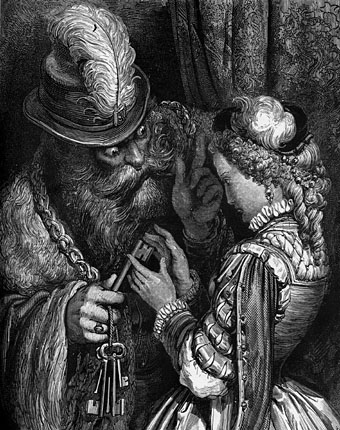
La Barbe bleue (Blue Beard).
Continue reading “Gustave Doré’s Fairy Tales of Charles Perrault”

